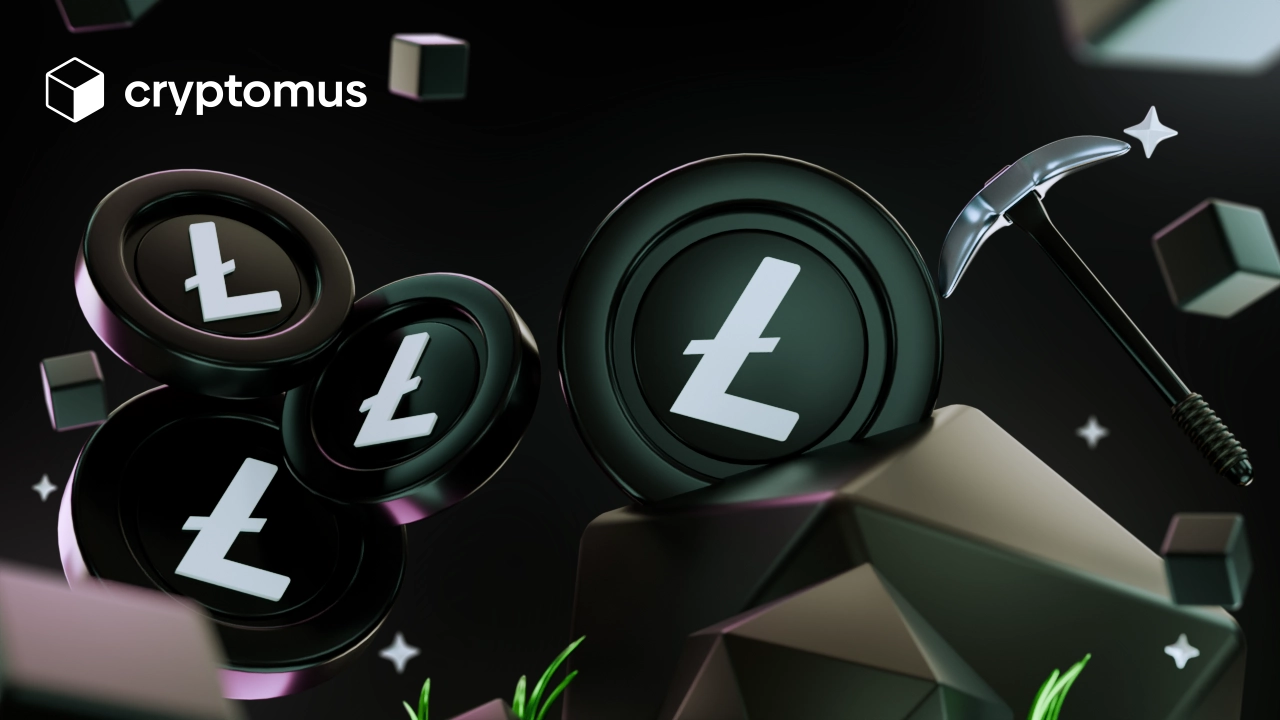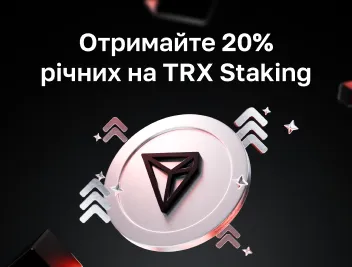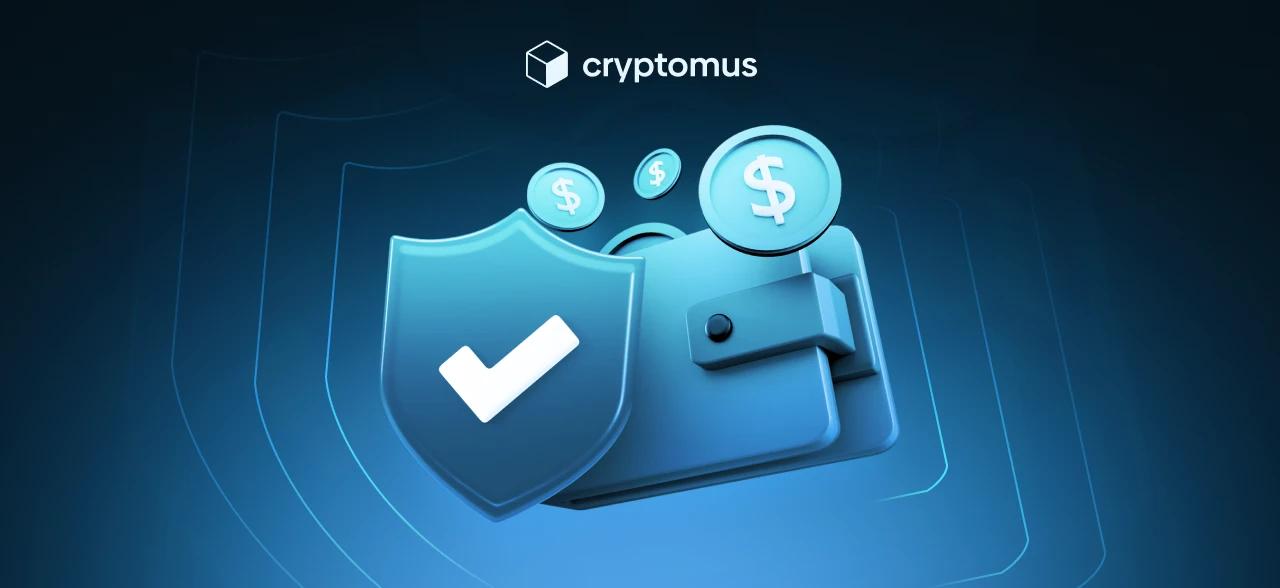
Як майнити Litecoin (LTC)
Litecoin (LTC) — це криптовалюта, розроблена Чарлі Лі в 2011 році для забезпечення швидких, безпечних і недорогих платежів завдяки використанню унікальних властивостей технології блокчейн. Вона входить до топ-10 криптовалют із найнижчими комісіями за транзакції.
Криптовалюта заснована на протоколі Bitcoin (BTC), але відрізняється алгоритмом хешування, часом блокування транзакцій і деякими іншими факторами. Час блокування Litecoin становить лише 2,5 хвилини, що в поєднанні з надзвичайно низькими комісіями робить цю криптовалюту придатною для мікротранзакцій.
Оскільки інтерес до криптовалют продовжує зростати, багато ентузіастів шукають майнінг LTC як спосіб заробити гроші та підтримувати мережу. Цей вичерпний посібник розповість вам усе, що вам потрібно знати про майнінг Litecoin, від основ до більш складних аспектів.
Чи можете ви майнити Litecoin?
Ви точно можете майнити Litecoin. Цей процес описує, як створюються нові токени LTC і як транзакції додаються до блокчейну. Litecoin, як і Bitcoin, використовує алгоритм Proof-of-Work (PoW). На відміну від Bitcoin, який використовує хеш-алгоритм SHA-256, Litecoin застосовує алгоритм Scrypt. Ця різниця робить майнінг Litecoin доступнішим для осіб з обладнанням споживчого класу, хоча конкуренція зросла з появою спеціалізованих майнінгових пристроїв.
LTC-майнінг передбачає вирішення складних математичних задач для перевірки транзакцій і захисту мережі. Майнери винагороджуються нещодавно викарбуваними лайткойнами та комісією за транзакції за свої зусилля. Щоб розпочати, вам знадобиться правильне обладнання, програмне забезпечення та розуміння різних доступних методів.
Як майнити Litecoin?
Майнінг Litecoin включає кілька ключових кроків:
- Отримайте та налаштуйте крипто-гаманець;
- Вибрати обладнання;
- Вибрати та встановити програмне забезпечення для майнінгу;
- Приєднайтеся до майнінг-пулу або майніть соло;
- Почніть майнінг і перевірте свій прогрес.
Цей докладний посібник охоплює всі кроки:
Крок 1. Отримайте та налаштуйте крипто-гаманець. Перш ніж почати майнінг, вам знадобиться гаманець для зберігання ваших винагород. Ви можете вибрати з різних варіантів, включаючи онлайн-гаманці. Наприклад, ви можете отримати гаманець Cryptomus. Ви можете легко надсилати, отримувати та керувати своїми активами за допомогою зручного інтерфейсу. Крім того, передова система безпеки забезпечує безпеку ваших інвестицій.
Перейдіть на офіційний сайт обраного гаманця і завантажте його. Дотримуйтесь інструкцій, щоб створити новий гаманець і зберегти початкову фразу в безпечному місці. Отримайте свою унікальну адресу гаманця, яка знадобиться для налаштування майнінгу.
Крок 2. Виберіть апаратне забезпечення.
Вибір правильного обладнання є ключовим кроком для успішного майнінгу Litecoin. Кожна технологія має свої переваги та недоліки.
майнери ASIC (спеціальні інтегровані схеми)
Найкращий спосіб майнити Litecoin — це використовувати майнери ASIC, які спеціально розроблені для алгоритму Scrypt. Популярні майнери ASIC:
- Antminer L3++: хешрейт 580 MH/s, енергоспоживання 942 Вт.
- Innosilicon A6 LTCMaster: хешрейт 1,23 GH/s, енергоспоживання 1500 Вт.
Майнери GPU (Graphics Processing Unit)
Хоча графічні процесори менш ефективні для видобутку Litecoin, їх можна використовувати, особливо якщо у вас уже є потужні відеокарти. Популярні графічні процесори:
- AMD Radeon RX 580: хороший баланс продуктивності та енергоспоживання.
- Nvidia GTX 1070: Ефективна під час майнінгу різних криптовалют, включаючи Litecoin.
майнери CPU (центрального процесора)
Майнінг Litecoin на центральному процесорі можливий, але вкрай неефективний порівняно з ASIC і графічним процесором. Однак, якщо у вас немає спеціалізованого обладнання і ви хочете спробувати майнінг в освітніх цілях, ви можете використовувати цей процесор. Популярні процесори:
- Intel Core i7/i9: висока продуктивність для багатозадачності.
- AMD Ryzen 7/9: чудова продуктивність і енергоефективність.
Крок 3. Виберіть і встановіть програмне забезпечення для майнінгу
Коли у вас є апаратне забезпечення, вам потрібно вибрати правильне програмне забезпечення для майнінгу. Програмне забезпечення підключає ваше обладнання до мережі Litecoin і дозволяє вам майнити.
Популярне програмне забезпечення для майнінгу:
- CGMiner: гнучке та потужне програмне забезпечення з відкритим кодом, яке підтримує різне обладнання.
- EasyMiner: зручне програмне забезпечення на основі графічного інтерфейсу користувача, ідеальне для новачків.
- BFGMiner: вдосконалене програмне забезпечення з різними функціями для досвідчених майнерів.
Завантажте обрану програму для майнінгу з офіційного сайту та встановіть її на свій комп’ютер. Налаштуйте програмне забезпечення, ввівши необхідні дані, такі як ім’я користувача та пароль.
Крок 4. Приєднайтеся до майнінг-пулу або майніть соло
Вирішіть, чи хочете ви приєднатися до пулу майнінгу чи майніти соло. Нижче ми розповімо, яку стратегію краще вибрати і чому. Але якщо ви вирішите приєднатися до пулу, вам потрібно отримати та додати свій пул видобутку URL-адрес у програмне забезпечення до інших налаштувань.
Крок 5. Почніть Майнінг і перевірте свій прогрес
Після того, як ваше апаратне та програмне забезпечення налаштовано та налаштовано, і ви приєдналися до майнінг-пулу, ви можете почати майнінг. Регулярно контролюйте продуктивність майнінгу, щоб переконатися, що все працює гладко. Поки ви накопичили достатню кількість LTC, переведіть її на свій криптогаманець (з першого кроку).
Скільки часу потрібно для видобутку 1 Litecoin?
Щоб оцінити, скільки часу знадобиться для майнінгу одного Litecoin, вам потрібно врахувати кілька ключових факторів: потужність вашого обладнання (хешрейт), поточну складність мережі Litecoin, винагороду за блок і середній час майнінгу одного блоку.
Наприклад, використовуючи Antminer L3++, який має хешрейт 580 MH/s із поточною складністю мережі 13 000 000 і винагородою за блок 12,5 LTC, ви можете підрахувати, що видобуток одного Litecoin займе приблизно 8,94 хвилини, якщо ви майните весь блок. Однак на практиці, якщо ви берете участь у пулі, час може відрізнятися залежно від вашого внеску в загальний хешрейт пулу.

Соло Майнінг VS. Майнінг пули
Вибираючи між соло-майнінгом і майнінг-пулами, важливо розуміти ключові відмінності та переваги кожного підходу.
-
Соло майнінг Litecoin передбачає індивідуальну роботу, використовуючи свої обчислювальні потужності для пошуку блоків. Основна перевага соло-майнінгу полягає в тому, що ви отримуєте повну винагороду за пошук блоків без необхідності ділитися нею з іншими, а також відсутність комісії за пул. Однак шанси знайти блок поодинці надзвичайно низькі через високу складність мережі, що може призвести до нерегулярних і непередбачуваних прибутків.
-
Майнінг-пули поєднують обчислювальну потужність багатьох майнерів, що значно підвищує ймовірність знаходження блоків. У пулі винагорода розподіляється пропорційно до внеску кожного учасника, що забезпечує більш стабільний і регулярний дохід. Пули також вимагають менше обладнання порівняно з соло-майнінгом, що робить їх більш доступними для майнерів з обмеженими ресурсами. Однак участь у пулі передбачає сплату комісії, як правило, від 1% до 2% від вашого прибутку, що зменшує ваш загальний дохід.
Вибір між соло-майнінгом і майнінг-пулом залежить від ваших цілей, рівня доступного обладнання та вашої готовності ризикувати. Якщо ви хочете повної незалежності та готові інвестувати в потужне обладнання, соло-майнінг може бути для вас. Якщо ви віддаєте перевагу стабільному доходу і хочете мінімізувати ризики, кращим вибором стане майнінг-пул.
Майнінг Litecoin на ПК
Хоча майнінг Litecoin на ПК менш ефективний, ніж використання ASIC-майнерів, це все одно можна зробити, особливо якщо ви хочете почати з мінімальними інвестиціями. Зокрема, ось короткий посібник про те, як майніти на ПК з GPU:
- Виберіть апаратне забезпечення: Переконайтеся, що ваш ПК має потужний графічний процесор, наприклад AMD Radeon RX 580 або Nvidia GTX 1070.
- Отримайте гаманець Litecoin: налаштуйте гаманець для зберігання видобутих LTC. Дотримуйтесь інструкцій, щоб захистити свій гаманець.
- Встановіть програмне забезпечення для майнінгу: Виберіть і встановіть надійне програмне забезпечення для майнінгу, сумісне з вашим графічним процесором і операційною системою (Windows, macOS або Linux).
- Приєднайтеся до пулу: Хоча ви можете майнити самостійно, приєднання до майнінг-пулу може збільшити ваші шанси на постійне отримання винагороди. Зареєструйтеся в майнінг-пулі та налаштуйте програмне забезпечення для підключення до пулу.
- Налаштуйте та запустіть майнінг: Налаштуйте параметри програмного забезпечення для майнінгу для оптимальної продуктивності. Почніть процес майнінгу та стежте за продуктивністю свого ПК. Слідкуйте за температурою, щоб уникнути перегріву та забезпечити безперебійну роботу системи.
Майнінг Litecoin на телефоні
Майнінг Litecoin на телефоні зазвичай непрактичний через обмежену обчислювальну потужність і ризик перегріву та пошкодження пристрою. Однак якщо ви хочете спробувати майніти на смартфоні, ось як ви можете це зробити:
- Завантажте мобільний додаток для майнінгу. Знайдіть мобільний додаток, який підтримує LTC-майнінг. Встановіть додаток на свій смартфон. Зареєструйте обліковий запис у програмі;
- Налаштуйте свій гаманець, щоб отримувати винагороди. Переконайтеся, що ваш криптогаманець захищений і що ви створили резервну копію початкової фрази;
- Приєднайтеся до майнінг-пулу. Краще об’єднати свої ресурси з ресурсами інших майнерів і збільшити свої шанси на отримання винагороди;
- Налаштувати параметри: відкрийте програму для майнінгу та введіть адресу свого гаманця та іншу необхідну інформацію. Якщо потрібно, виберіть пул, до якого ви хочете приєднатися, і налаштуйте додаток для початку майнінгу. Будьте обережні щодо навантаження на процесор і акумулятор пристрою;
- Почати майнінг. Слідкуйте за роботою та температурою телефону, щоб запобігти пошкодженню.
Більш детально про те, як майнити криптовалюту на смартфоні, ми розповіли в нашій статті. Ви можете прочитати його тут.
Що таке хмарний майнінг Litecoin?
У майнінгу також існує концепція хмарного майнінгу, яка доступна і для LTC.
Хмарний майнінг Litecoin — це метод майнінгу криптовалюти, при якому ви орендуєте обчислювальну потужність у хмарного постачальника замість того, щоб інвестувати у власне обладнання для майнінгу. У такому підході провайдери хмарного майнінгу надають користувачам доступ до своїх ферм, налаштованих на ефективний видобуток криптовалюти, як-от Litecoin (LTC). Ви, як користувач, платите за оренду цих ресурсів, а в обмін отримуєте частку винагороди за майнінг.
Як це працює?
- Виберіть постачальника: Користувач вибирає компанію з хмарного майнінгу та реєструється на своїй платформі.
- Виберіть договір: Ви обираєте план оренди обчислювальної потужності, який може відрізнятися за часом і потужністю.
- Здійсніть платіж: ви платите за контракт, а ваші кошти йдуть на покриття витрат компанії на обладнання та обслуговування.
- Почати майнінг: Постачальник використовує ваші платні ресурси для майнінгу Litecoin. Ви отримуєте винагороду у вигляді LTC, яка розподіляється пропорційно вашому внеску.
Переваги:
- **Немає необхідності у вашому власному обладнанні: ** вам не потрібно турбуватися про покупку, установку та обслуговування обладнання для майнінгу.
- Зручність: Усі технічні питання та обслуговування бере на себе провайдер. Ви просто орендуєте потужність і отримуєте винагороду.
- Нижчі початкові інвестиції: Зазвичай вартість оренди значно нижча, ніж придбання власного обладнання.
Недоліки:
- Ризик шахрайства: На ринку багато ненадійних компаній, тому важливо вибирати надійних постачальників.
- Менше контролю: Ви не керуєте обладнанням, а також не можете безпосередньо впливати на його роботу.
- Нижча прибутковість: Хмарний майнінг часто менш прибутковий порівняно з самостійним майнінгом, особливо з огляду на комісію та операційні витрати постачальника.
Хмарний майнінг пропонує зручний спосіб брати участь у видобутку Litecoin без необхідності інвестувати у власне обладнання. Однак важливо ретельно вивчити та вибрати авторитетного постачальника, щоб мінімізувати ризики та максимально використати цей метод.
Чи вигідно майнити Litecoin?
Рентабельність майнінгу Litecoin залежить від кількох факторів:
- **Витрати на обладнання: ** Інвестиції в обладнання для майнінгу є першою значною статтею витрат. Тип обладнання, яке ви обираєте, значною мірою впливає на ефективність і прибутковість майнінгу. ASIC-майнери є найефективнішими для майнінгу Litecoin завдяки їхнім високим хешрейтам і енергоефективності порівняно з графічними чи центральними процесорами.
- Витрати на електроенергію: Рентабельність вашої майнінгової діяльності значною мірою залежить від вартості електроенергії у вашому регіоні. Високі ціни на електроенергію можуть значно зменшити або навіть звести нанівець ваш прибуток від майнінгу.
- Ціна Litecoin: Вартість видобутих вами Litecoin безпосередньо впливатиме на вашу прибутковість. Ціни на криптовалюту нестабільні та можуть сильно коливатися, що означає, що прибутковість майнінгу може швидко змінюватися.
- Складність майнінгу: Складність мережі визначає, наскільки важко видобути блок у мережі Litecoin. У міру того, як більше майнерів приєднуються до мережі та забезпечують більшу потужність хешування, складність зростає. Вища складність означає, що потрібно більше обчислювальної потужності та часу, щоб видобути ту саму кількість Litecoin.
- Комісія майнінг-пулу: якщо ви приєднуєтеся до майнінг-пулу, вам потрібно буде сплатити комісію, як правило, невеликий відсоток від вашого прибутку. Пули поєднують хеш-потужність кількох майнерів, щоб частіше знаходити блоки, пропонуючи послідовніші, але менші виплати.
- Витрати на охолодження та технічне обслуговування. Обладнання для майнінгу виділяє значну кількість тепла, що потребує належного охолодження для підтримки оптимальної продуктивності та запобігання пошкодженню. Витрати на охолодження та обслуговування (наприклад, очищення та ремонт обладнання) також є важливими факторами, які слід враховувати.
Для визначення прибутковості скористайтеся калькулятором прибутковості майнінгу. Введіть хешрейт вашого обладнання, енергоспоживання, вартість електроенергії та інші змінні, щоб оцінити потенційні прибутки. Майте на увазі, що нестабільність цін на криптовалюту може вплинути на ваш остаточний прибуток.
Майнінг Litecoin може бути корисним підприємством, якщо підійти до нього з відповідними знаннями та ресурсами. Від вибору правильного обладнання та програмного забезпечення до рішення між сольним майнінгом і приєднанням до пулу, кожен крок вимагає ретельного розгляду.
Незалежно від того, чи є ви досвідченим майнером чи новачком, розуміння тонкощів видобутку Litecoin має вирішальне значення для максимізації ваших прибутків. У міру того, як криптовалютний ландшафт розвивається, бути поінформованим і адаптуватися допоможе вам орієнтуватися в викликах і можливостях видобутку Litecoin.
Дякуємо за читання та щасливого майнінгу!
Оцініть статтю








коментарі
0
Ви повинні увійти, щоб залишити коментар